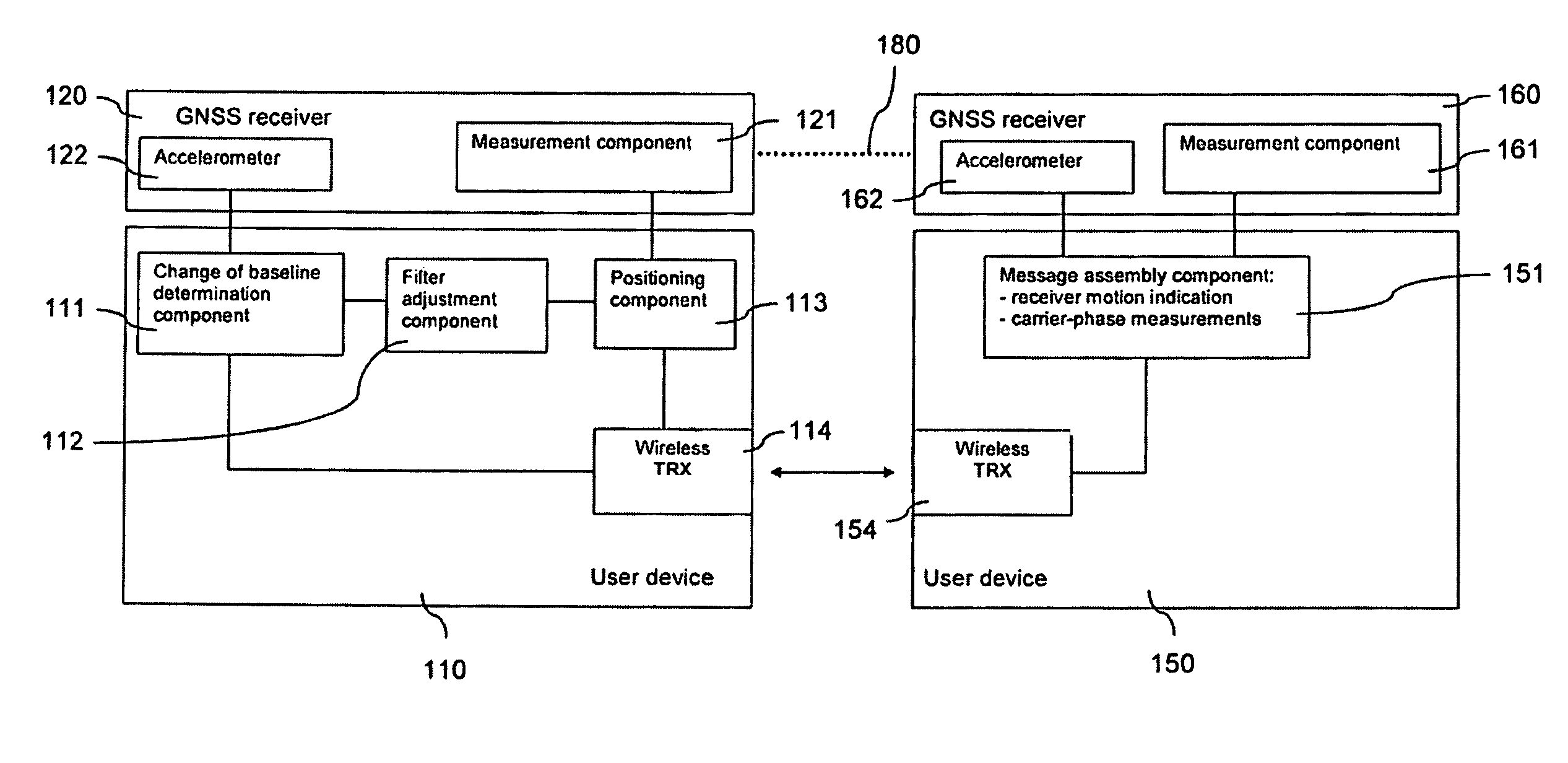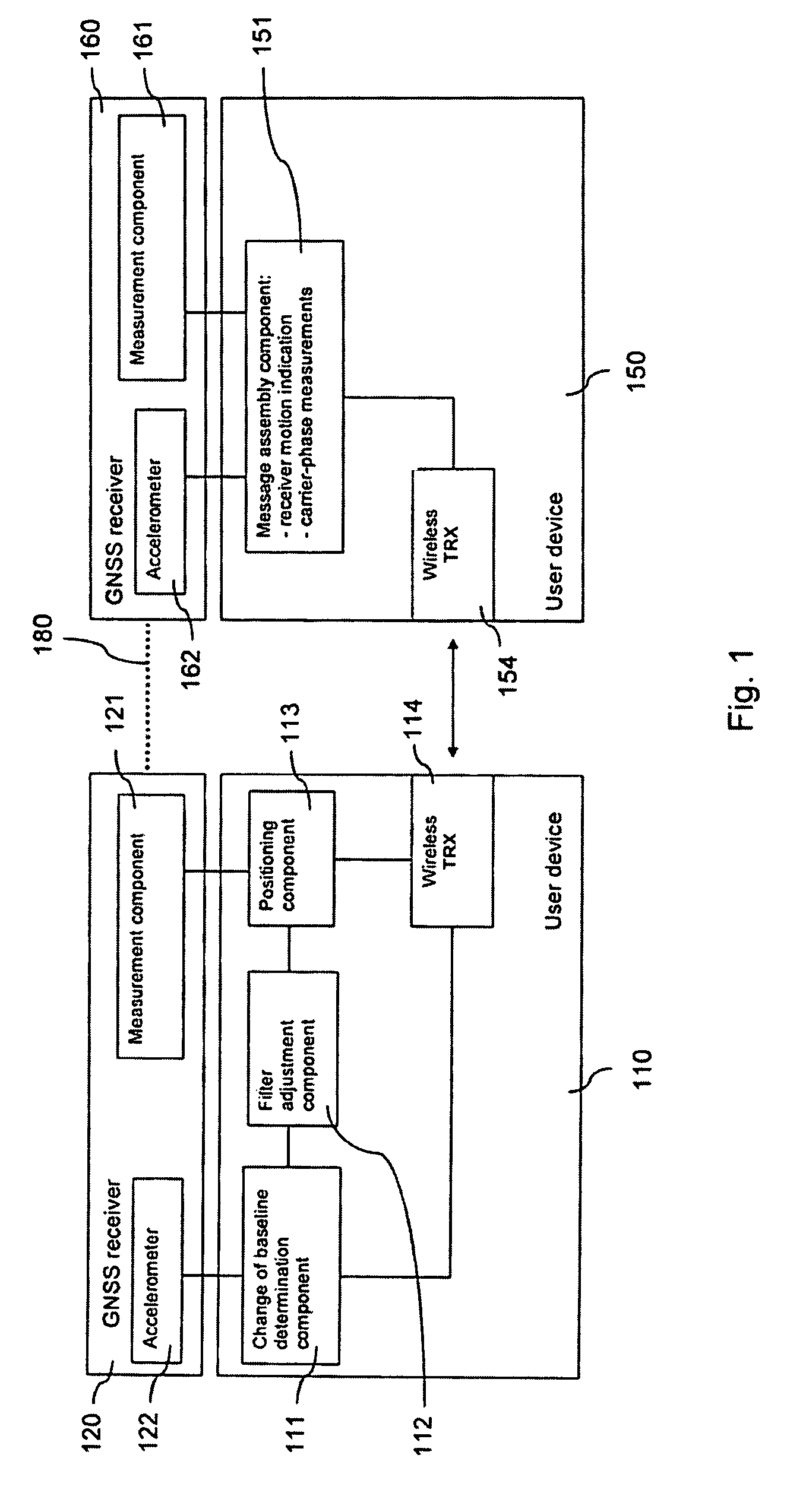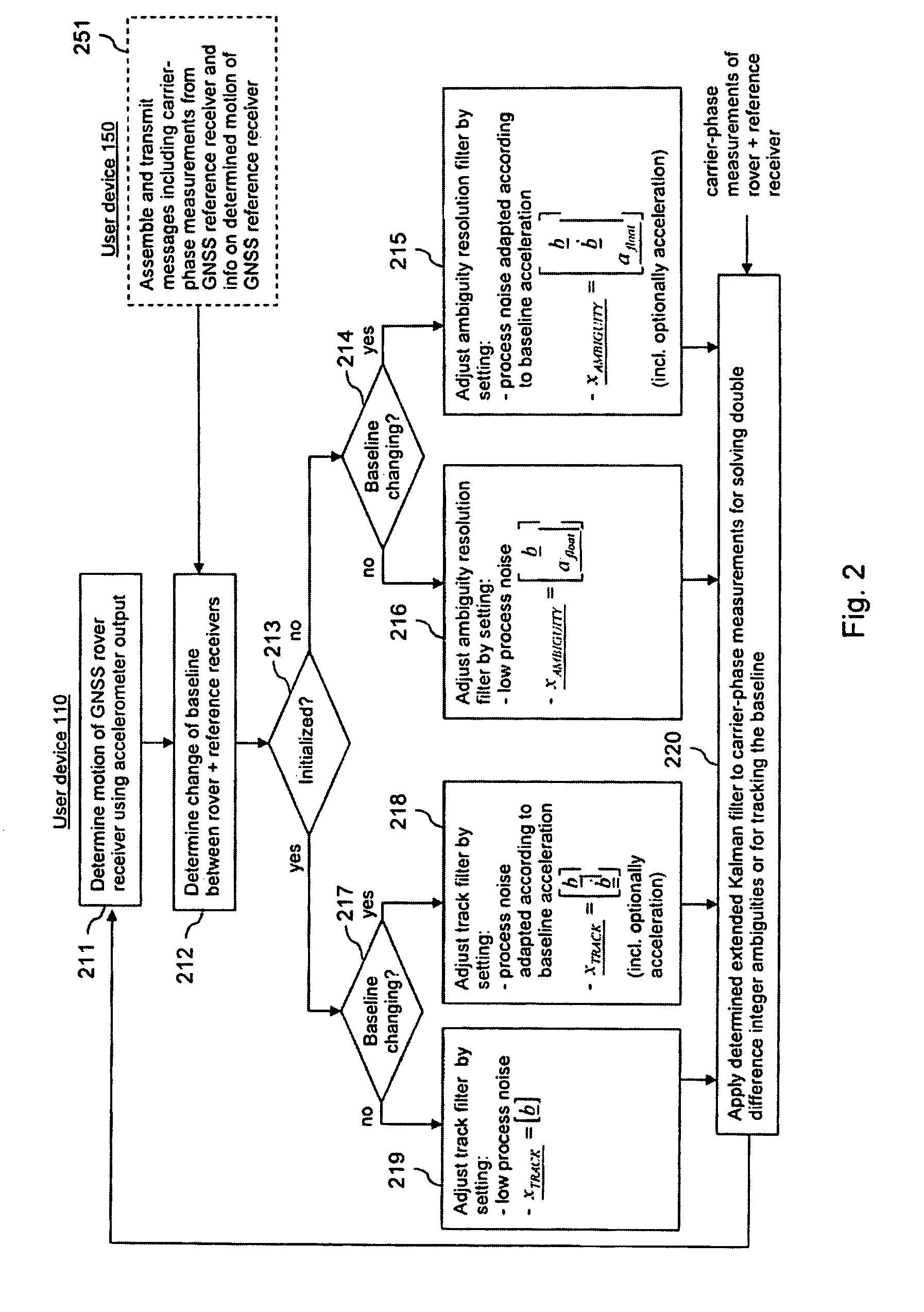Determination of a relative position of a satellite signal receiver
- Summary
- Abstract
- Description
- Claims
- Application Information
AI Technical Summary
Benefits of technology
Problems solved by technology
Method used
Image
Examples
first embodiment
[0059]FIG. 1 is a schematic block diagram of a system, which enables an adaptive filtering for determining and tracking a baseline between two GNSS receivers in accordance with the invention.
[0060]The system comprises two user devices 110, 150, for example mobile phones or laptops.
[0061]Each of the user devices 110, 150 is connected to a GNSS receiver 120, 160. The GNSS receivers 120, 160 are accessory devices that can be linked to a respective user device 110, 150 using any suitable link, like a physical connection or a Bluetooth® link, etc. Thus, the GNSS receivers 120, 160 could be moved by a user separately from the user devices 110, 150. Alternatively, the GNSS receivers 120, 160 could be integrated in the user devices 110, 150.
[0062]Each of the GNSS receivers 120, 160 comprises a measurement component 121, 161, which is able to perform carrier phase measurements on received satellite signals of at least one GNSS, for instance Galileo or GPS. Each of the GNSS receivers 120, 160...
second embodiment
[0128]FIG. 6 is a schematic block diagram of a system, which enables an adaptive filtering for determining and tracking a baseline between two GNSS receivers in accordance with the invention.
[0129]The system comprises a wireless communication terminal 610 and a network element 650.
[0130]The terminal 610 can be for instance a mobile phone.
[0131]The terminal 610 comprises a processor 611 and, linked to this processor 611, a memory 612, a transceiver (TRX) 617, a user interface 618, an accelerometer 619 and a GNSS receiver 620. It is to be understood that the GNSS receiver 620 could also be a separate device. In case the GNSS receiver 620 can be moved separately from the terminal 610, however, the accelerometer 619 has to be integrated in or physically connected to the GNSS receiver 620. GNSS receiver 620 functions as a rover receiver.
[0132]The processor 611 is configured to execute implemented computer program code. The memory 612 stores computer program code, which may be retrieved b...
PUM
 Login to View More
Login to View More Abstract
Description
Claims
Application Information
 Login to View More
Login to View More - R&D
- Intellectual Property
- Life Sciences
- Materials
- Tech Scout
- Unparalleled Data Quality
- Higher Quality Content
- 60% Fewer Hallucinations
Browse by: Latest US Patents, China's latest patents, Technical Efficacy Thesaurus, Application Domain, Technology Topic, Popular Technical Reports.
© 2025 PatSnap. All rights reserved.Legal|Privacy policy|Modern Slavery Act Transparency Statement|Sitemap|About US| Contact US: help@patsnap.com



